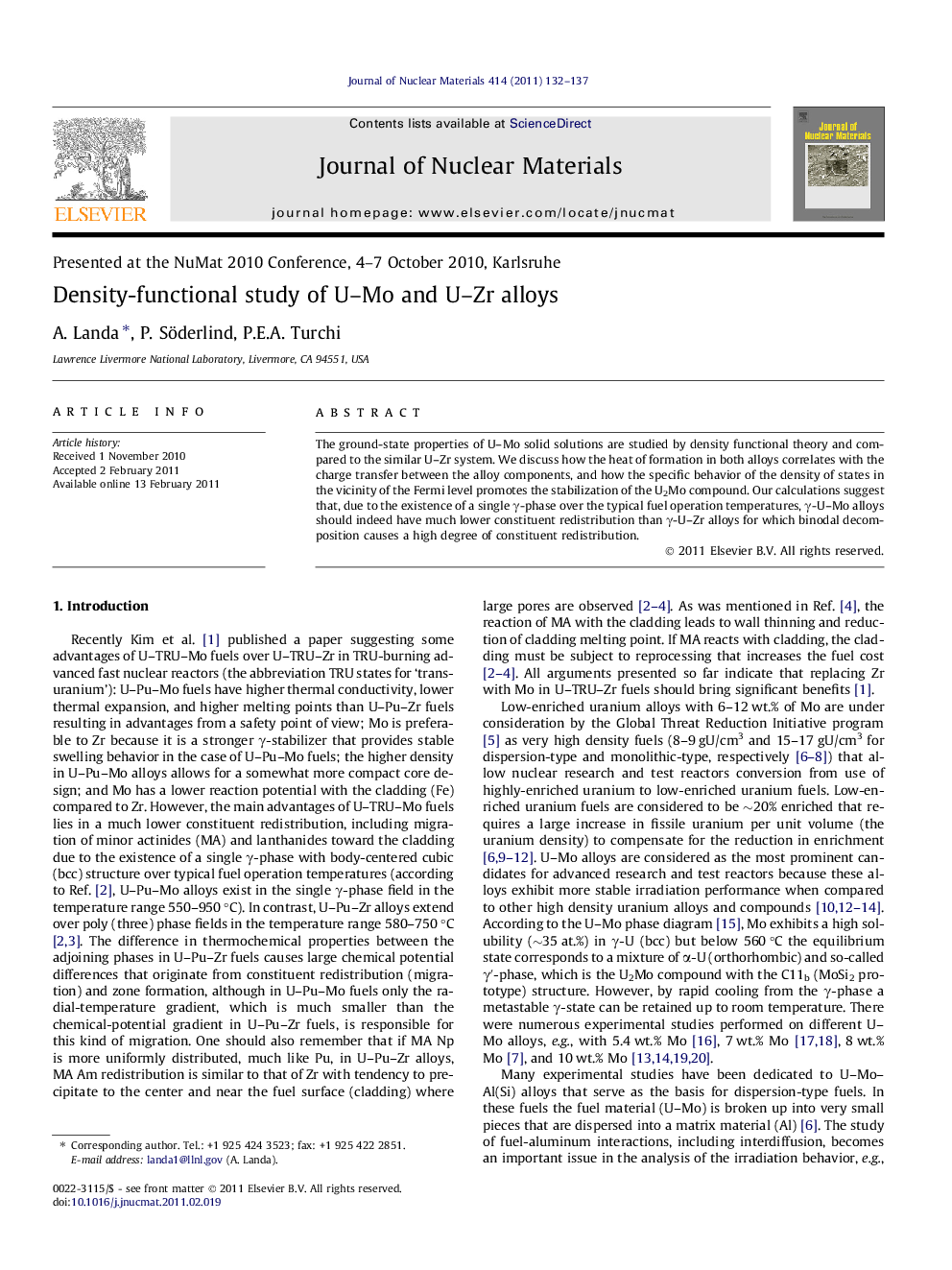| Article ID | Journal | Published Year | Pages | File Type |
|---|---|---|---|---|
| 1566668 | Journal of Nuclear Materials | 2011 | 6 Pages |
Abstract
The ground-state properties of U–Mo solid solutions are studied by density functional theory and compared to the similar U–Zr system. We discuss how the heat of formation in both alloys correlates with the charge transfer between the alloy components, and how the specific behavior of the density of states in the vicinity of the Fermi level promotes the stabilization of the U2Mo compound. Our calculations suggest that, due to the existence of a single γ-phase over the typical fuel operation temperatures, γ-U–Mo alloys should indeed have much lower constituent redistribution than γ-U–Zr alloys for which binodal decomposition causes a high degree of constituent redistribution.
Related Topics
Physical Sciences and Engineering
Energy
Nuclear Energy and Engineering
Authors
A. Landa, P. Söderlind, P.E.A. Turchi,
